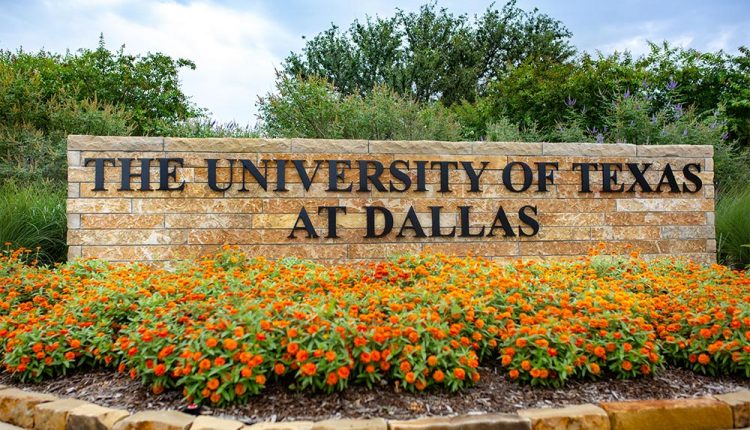University Of Texas At Dallas Engineers Win Baxter Award
Three University of Texas at Dallas researchers who are developing innovative ways to help save people’s lives have received second-tier Baxter Young Investigator Awards for their work.
Bioengineering postdoctoral researcher Dr. Sasya Madhurantakam, biomedical engineering doctoral student Ivneet Banga and mechanical engineering research associate Dr. Qi Cai are the latest UT Dallas recipients of the award, which supports research to develop therapies and medical products that save and sustain patients’ lives. Ambalika Tanak MS’16, PhD’21 and Badrinath Jagannath PhD’21 were previous Baxter Award recipients from UTD, in 2020 and 2021, respectively.
Medical technology company Baxter International Inc. named 17 winners of the award, which included six first-tier recipients. UT Dallas was the only institution with more than two awardees in 2022.
Dr. Sasya Madhurantakam
When Madhurantakam’s father-in-law in India came down with a mild case of COVID-19 in 2020, the family thought he was better off recovering at home. When he didn’t seem to recover, the family took him to the hospital, but within three days, he died.
Madhurantakam, who was conducting postdoctoral work in Japan and was not allowed to travel to India at the time, saw the medical problem very clearly: Caretakers and hospital staff had no way to tell which COVID-19 patients needed a high level of hospital care and who would recover at home.
She joined Dr. Shalini Prasad’s Biomedical Microdevices and Nanotechnology Laboratory at UT Dallas to develop a way to quickly detect the severity of a patient’s infection.
The method uses an electrochemical sensing technique originated by Prasad, department head of bioengineering and the Cecil H. and Ida Green Professor in Systems Biology Science.
Madhurantakam’s technology uses a blood sample to show whether a patient has COVID-19, and if so, the severity of the disease. The wallet-sized device senses the patient’s immune system response to COVID-19, with a strong response correlating to a more serious case of the disease.
Within minutes, the device can detect the levels of four kinds of biomarkers, even before a patient shows symptoms of infection.
“The development of a device that is useful to the community and society is the major contribution I can make,” said Madhurantakam, who also lost several other family members to COVID-19. “I don’t want to do research that is just limited to publications. I want to develop technologies that are useful to people.”
Ivneet Banga
Banga also earned a Baxter Award for a disease detection device — a handheld breath analyzer — that can detect respiratory diseases, including COVID-19, within seconds.
“When COVID started, we were all sitting at home,” Banga said. “One day, Dr. Prasad asked whether we could design an electrochemical sensor for COVID.
“We were getting reports that COVID was affecting people’s lung capacity. I thought that might be a good starting point.”
“This breath analyzer platform is a first-of-its-kind screening tool for coronavirus detection in under five seconds,” said Banga, who previously was selected as one of two runners-up for a Young Chemist Award from laboratory equipment manufacturer Metrohm USA.
The device detects levels of volatile organic compounds in the breath that increase when a patient has COVID-19 or other respiratory infections.
Banga’s future work includes studying the device’s potential for detecting other serious diseases.
“It is exciting to see the great strides our doctoral students and early career researchers are making in developing cutting-edge technology that demonstrates promise in translating from bench to bedside or to homes,” Prasad said. “The nurturing and vibrant environment at UT Dallas plays a critical role in empowering these young minds to dream big for a global impact.”
Dr. Qi Cai
Cai works with Dr. Zhenpeng Qin, associate professor of mechanical engineering and Fellow, Eugene McDermott Professor, and other researchers in his lab on developing a technique to temporarily open the blood-brain barrier to deliver medicine to the brain.
“On one side, this can help our brain be healthy, maintain normal function,” she said about the dynamic barrier that protects the brain. “On the other side, it prevents the drugs from getting into the brain.”
With Qin, Cai and her colleagues developed a method to temporarily prop open cells in the membrane using gold nanoparticles to allow medicine to enter. They showed that the approach is safe and doesn’t harm blood vessels or brain activity.
That means, for example, that cancer medication might be delivered into the brain to treat glioblastoma, a particularly deadly type of cancer due to the difficulty of getting medication past the brain’s barrier to the tumors.
“The prestigious Baxter Award is a coveted honor in the field of engineering and applied sciences, recognizing the scientific excellence, creativity and novelty, as well as addressing unmet scientific and technological needs,” Qin said. “Dr. Cai is clearly a rising star among her peers. Her outstanding background in nanomaterials and unwavering drive to tackle the most complex challenges in the realm of brain disorders are unparalleled.”
Cai also teamed up with Dr. Robert Bachoo, associate professor of neurology and internal medicine at UT Southwestern Medical Center, to establish two glioblastoma animal models that recapitulate the gene mutations and tumor microenvironment that are commonly seen in human glioblastoma. In animals, the treatment approach was shown to decrease tumor size and increase survival rates.
The promise of developing lab work into solutions for real people is what drew Cai to UT Dallas.
“I have a background in chemistry; I have a lot of experience in nanoparticles. But I always think, ‘What can I do with these things?’” she said. “I always wanted to solve a problem to help people.”

